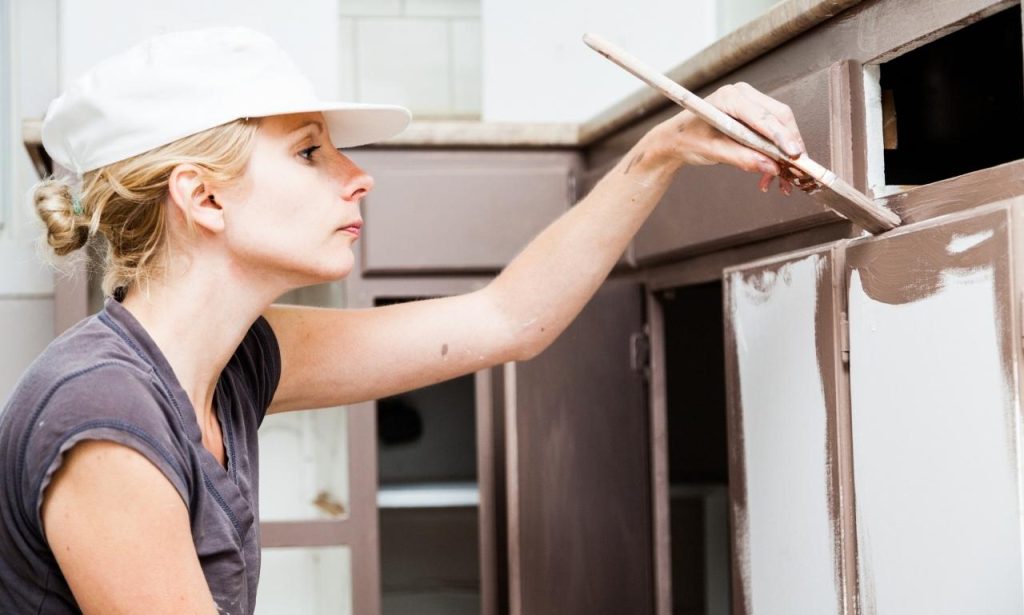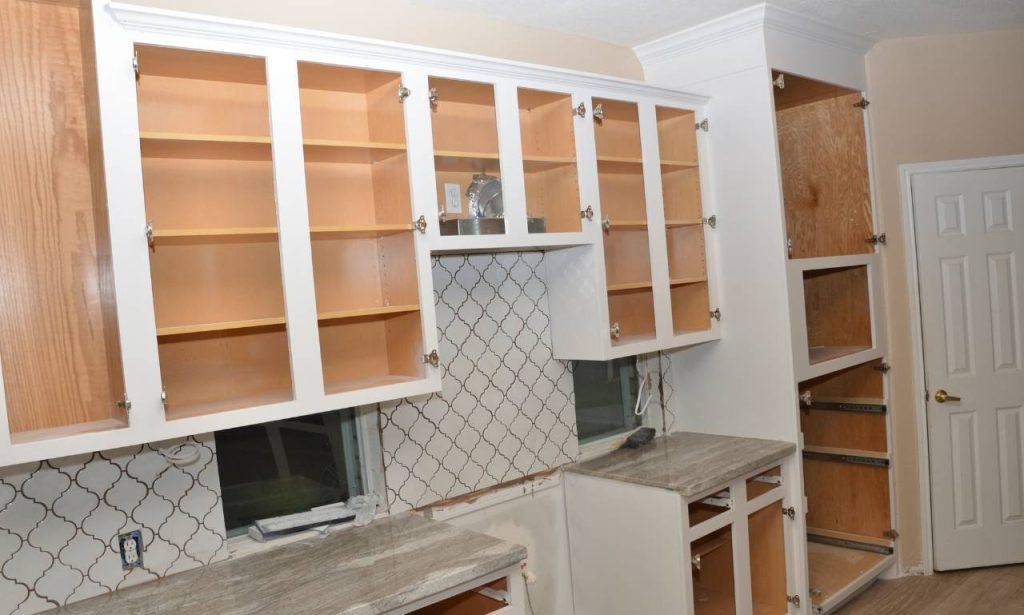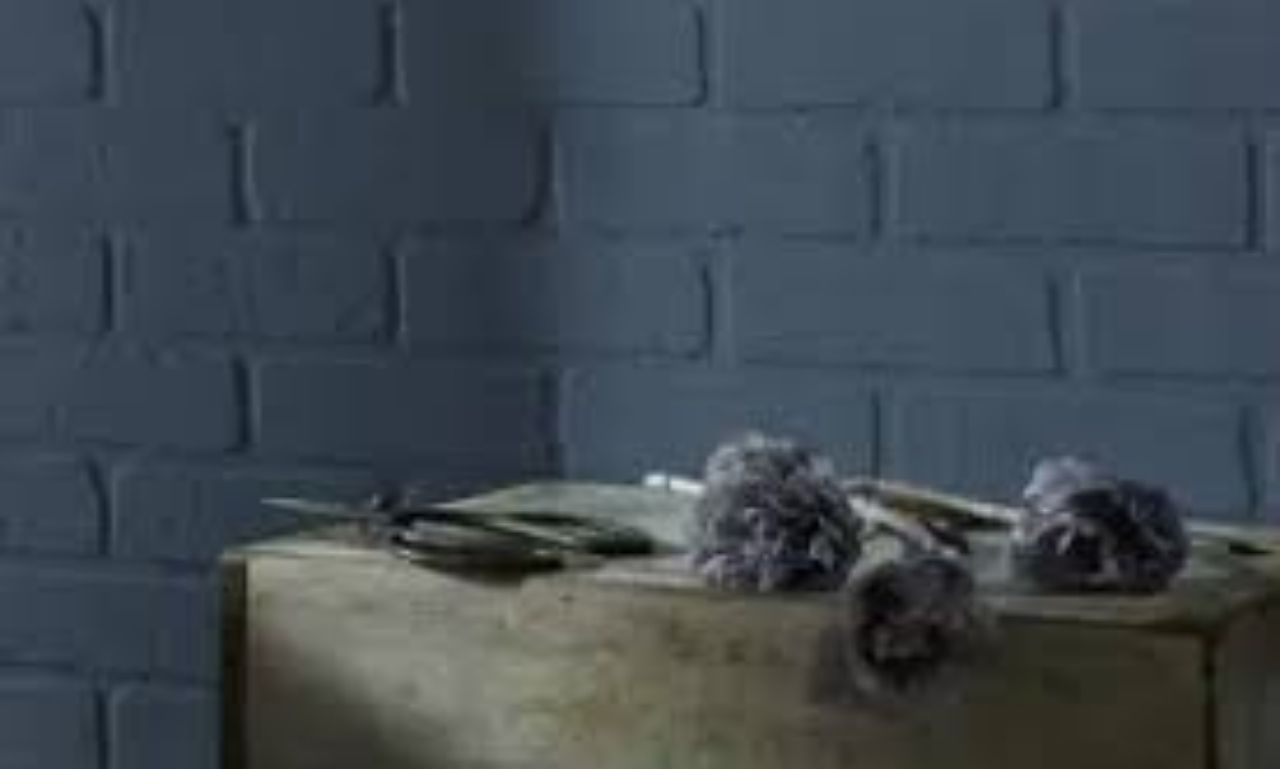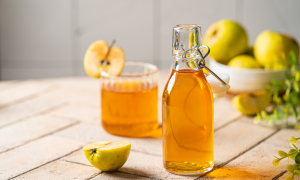Painting kitchen cabinets can transform your entire kitchen without breaking the bank. I’ve seen this firsthand in my consulting work with home improvement brands. The right paint makes all the difference in the final result. Kitchen cabinets take daily abuse from cooking, cleaning, and constant touching. Your paint choice matters more than you might think. This guide will help you select the perfect paint for your kitchen cabinets. We’ll cover finishes, types, preparation techniques, and recommended brands. Let’s turn your kitchen into a showstopper with just a few coats of paint.
Pick A High-Sheen Finish

Household cabinet finish equally determines their lasting properties and observable traits. Higher sheen levels increase the protective capabilities of kitchen hazards. The kitchen environment, with its moisture, grease, and regular cleaning, requires paint that will endure.
Most kitchen cabinets function best when painted with semi-gloss finishes. The paint creates a delicate, reflective sheen that beautifies light incidence. The surface of this finish allows quick removal of cooking residue and fingerprints through simple wiping. Repeated cleaning sessions do not diminish the sheen quality of semi-gloss paints.
High-gloss finishes produce reflective surfaces that appeal to numerous homeowners because of their mirror effect. These finishes provide the best combination of durability and easy cleaning capabilities. The visibility of all surface flaws makes it essential to perform thorough preparation work. Since high-gloss cabinets create modern kitchen appeal through their sleek contemporary design, this finish has become common in modern homes.
Satin finishes deliver moderate sheen levels between matte and semi-gloss choices. The finishes provide decent longevity and create a delicate gloss finish that numerous people find attractive. The satin finish is the best choice for kitchens in traditional or transitional styles.
Kitchen cabinets usually avoid using Eggshell and flat finishes as suitable options. Regular cleaning procedures and easy staining make these finishes unsuitable for kitchen use. Used primarily for living room and bedroom walls, these finishes should not be selected for kitchen or bedroom spaces.
Choose The Best Type Of Paint
The type of paint you select impacts everything from application ease to long-term performance. Several paint technologies compete for your attention in the paint aisle.
Water-based alkyd enamel paints have revolutionized cabinet painting in recent years. They combine the durability of oil with easy water cleanup. These hybrids self-level beautifully, reducing visible brush strokes. Benjamin Moore Advance leads this category with remarkable results.
Oil-based paints were once the gold standard for cabinets. When fully cured, they create a rigid, durable surface. These paints require mineral spirits for cleanup and longer dry times. Many professionals still prefer oil paints for their unmatched durability.
Acrylic paints provide excellent performance while drying more quickly than other types. They also demonstrate better resistance to yellowing than oil-based paints when they age. Budget-conscious renovation projects benefit from these paints, which deliver satisfactory outcomes.
Specialty cabinet paints have seen increasing popularity because of their characteristic finishes, which are brought forth through chalk paint. Kitchen environments need supplementary sealing measures when using these paints. Specialty cabinet paints should be used for particular design styles instead of regular durability needs.
I chose water-based alkyd paint for my kitchen cabinets. The self-leveling properties eliminate brush marks during application, so my cabinets remain fresh after five years.
Prepare Your Cabinets Before Painting

Preparation determines 80% of your project’s success. Avoid shortcuts here, as they will haunt your finished cabinets. Start by completely removing all cabinet doors, drawers, and hardware.
Clean every surface thoroughly with a degreasing cleaner. Kitchen cabinets accumulate invisible grease over time, which prevents proper paint adhesion if not removed completely.
Sand all surfaces with medium-grit sandpaper (120-grit works well). Your goal isn’t to remove all finishes but to create a texture for primer adhesion. Follow with fine-grit sandpaper for smoothness before priming.
Fill any holes, dents, or imperfections with high-quality wood filler. Sand these repairs flush with surrounding surfaces. Small details make massive differences in your final finish.
Prime all surfaces with a high-adhesion primer made explicitly for cabinets. This critical step improves adhesion and prevents bleed-through from wood tannins. Allow proper drying time between coats as specified by the manufacturer.
Label all doors and hardware locations during removal. This simple step prevents headaches during reassembly later. Small pieces of masking tape work perfectly for this purpose.
Best Paints For Kitchen Cabinets
Benjamin Moore Ballet White (OC-9)
Benjamin Moore Ballet White is a warm, creamy white that complements various design styles. This versatile color adapts beautifully to changing light conditions throughout the day and pairs wonderfully with marble or quartz countertops featuring warm undertones.
The slight warmth prevents the stark, sterile appearance that bright whites sometimes create. Ballet White maintains a timeless appeal that won’t quickly date your kitchen. This color consistently ranks among designers’ favorite cabinet choices year after year.
Benjamin Moore Gray Owl (2137-60)
Benjamin Moore Gray Owl delivers a perfect light gray with subtle green-blue undertones. This sophisticated neutral works in both modern and traditional kitchen settings. Gray Owl changes character slightly depending on your kitchen’s lighting situation.
This color creates a soft, calming presence without overwhelming the space. It pairs beautifully with stainless steel appliances and various countertop materials. Gray Owl provides enough color for interest while maintaining neutrality for versatile design options.
Sherwin-Williams Clary Sage (SW 6178)
Sherwin-Williams Clary Sage brings soothing green tones that create a warm, organic ambiance in kitchen spaces. This neutral tint creates an authentic bond that connects indoor areas to the surrounding nature. Clary Sage has become known as a paint color that provides calming, restorative spaces in kitchens.
The Clary Sage color presents itself as a refined neutral tone instead of standing out as a vibrant option. It pairs best with brass hardware and natural wood components. The Clary Sage color choice provides an excellent solution for people seeking color without needing permanent commitment.
Sherwin-Williams Meander (SW 9522)
Sherwin-Williams Meander presents a blue shade that combines medium tones with grayish undertones. This multicolored blue design choice stands the test of time because it remains uninterested in fads. Using a Meander color scheme creates a lasting elegant appearance for kitchen cabinets.
Blue kitchen cabinets have gained popularity because they introduce an unanticipated welcoming feel to domestic spaces. The proper color depth in the Meander prevents the color from becoming dark or heavy. This color finds its ideal match when set against white surfaces and countertops.
Benjamin Moore Newburyport Blue (HC-155)

The classic navy appearance of Benjamin Moore Newburyport Blue will always remain fashionable. The deep color serves as an elegant main attraction in any kitchen space. This color type suits kitchen islands in addition to lower cabinet installations.
The deep intensity of this color conceals fingerprints and smudges better than pale colors. This color matches brass, chrome, and black hardware to produce multiple design options. Choosing this daring color option can achieve slight but impactful kitchen renovations.
Best paint for trim and cabinets
Water-based
The quality of water-based cabinet paints has experienced significant advancements in recent years. Water-based cabinet paints dry quickly; users can easily clean them with soap and water. The paints produce lower amounts of VOCs, making them suitable for indoor usage.
Modern water-based paint products create exceptional bonds to surfaces that receive proper preparation. The paint keeps its original color without turning yellow during long periods of exposure, making water-based cabinet paints the market’s leading paint category.
Self-leveling and professional finish
Self-leveling techniques that emerge in paint products have simplified the execution of cabinet restoration projects among DIY painters. The paints automatically remove brush marks as they flow out after application. A professional spray finish quality emerges from the application process.
The self-leveling properties of hybrid alkyd-water formulas function exceptionally well. The paint requires more time to dry before it settles flawlessly. The technology enables beginners to create professional-quality results.
Very durable and easy to maintain
Cabinet paint must withstand constant touching, cleaning, and kitchen hazards. Modern formulations create remarkably durable finishes that resist chipping and wear. The best cabinet paints maintain their appearance through years of daily use.
Cleaning painted cabinets should require nothing more than a damp cloth. Quality paints resist staining from food splashes and cooking residue. This easy maintenance keeps your kitchen looking fresh without constant touch-ups.
Pros
High-quality cabinet paint transforms kitchens for a fraction of replacement costs. The investment delivers remarkable return value compared to complete cabinet replacement. Most kitchens require only 1-2 gallons for complete transformation.
Modern paints offer incredible durability, withstanding busy family kitchens. Self-leveling formulas make achieving professional results accessible to DIYers. The variety of available colors allows complete customization to your specific taste.
Cabinet painting works on most existing cabinets regardless of their current finish. The process typically takes just a weekend plus drying time. Updated cabinet colors instantly modernize outdated kitchen designs.
Cons
Proper cabinet painting requires significant preparation time and attention to detail. Rushing the process or skipping steps leads to disappointing results. The project creates temporary kitchen disruption during the painting process.
Some wood species, like oak, maintain their texture even after painting. For best results, cabinet painting requires removing all doors and hardware. The process involves multiple steps that cannot be shortened without consequences.
Oil-based paints require proper ventilation and careful handling of solvents. Some specialty finishes need additional protective topcoats for kitchen durability. Darker colors may show wear more quickly than lighter options.
Conclusion
The selection process of kitchen cabinet paint demands a combination of longevity performance, surface presentation, and application procedure. Water-based alkyd enamels present the optimal performance level that works well in most applications. Semi-gloss and satin finishes offer an optimal appearance, quality, and functionality blend.
The quality of your preparation work will usually produce better results than the brand of paint you choose. You should dedicate time to cleaning, sanding, and priming before applying your selected paint. Quality brushes combined with mini rollers will produce professional-quality finishes.
Selecting a cabinet color should consider your kitchen area’s design elements. The best cabinets should enhance all aspects of countertops, flooring, and backsplash designs. The listed guidelines enable you to transform your kitchen transformation with self-assurance.
Also Read: 7 Ways to Clean with Apple Cider Vinegar
FAQs
Most cabinets require two coats of primer for perfect coverage and durability.
Brushes work well for most DIYers, while spray guns provide the smoothest finish.
Depending on the formula, most cabinet paints need 7-30 days to fully cure.
Light sanding between coats with fine-grit sandpaper creates the smoothest possible finish.





